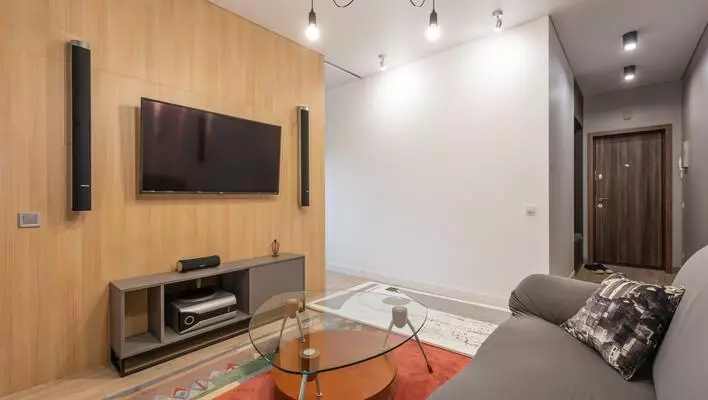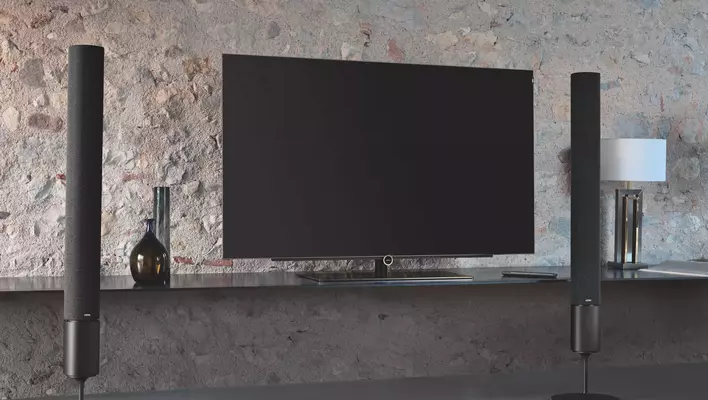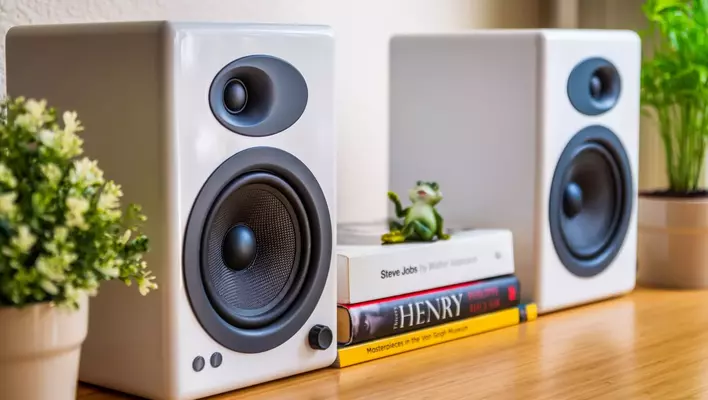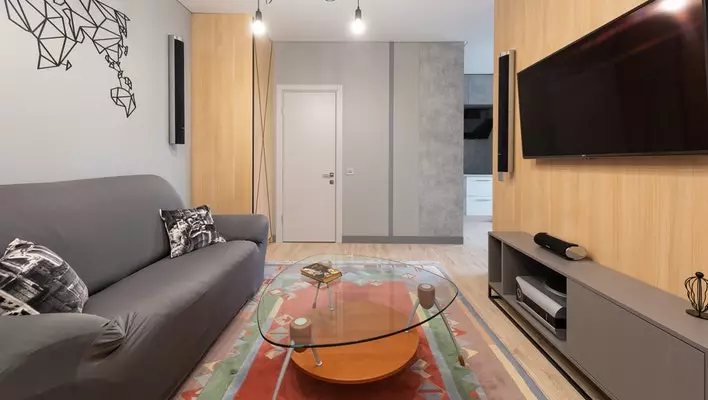I do not have the luxury of owning a big and dedicated room for a fully-fledged home theater system. I can only do a smaller 5.1 home theater system in my living room.
Maybe these are words you can use to describe yourself. Do you have a small room that you use as your living room and need to have a nice sound system? Well, we’ve got you.
In this detailed guide, we endeavor to show you an easy yet practical way to set up a 5.1 home theater system in a small space. You must do this carefully to ensure you don’t mess up with your décor or create fuzzy sound because of the little space you have at hand.

What is a 5.1 Speaker Setup?
Before we get into the real meat of this article, let’s first understand what a 5.1 home theater system is. Surround sound systems are defined by the number of speakers and bass channels they sport. This means that a 5.1 system has five speakers and one subwoofer that gives the bass needed in the setup.
There are various other systems, such as the 7.1 system, 9.1, 11.1, and even others with more than one subwoofer like the 9.2. Other speaker systems have overhead speakers such as the 9.1.2 that achieve the Dolby Atmos effects.
The 5.1 sound system is the simplest surround sound speaker setup and ideal for a small room since it is not bulky and still affords you the best sound quality.
Why do You Need a 5.1 Speaker Setup?
With the wide range of home theaters out in the market, why would you need to consider the 5.1 as a number one on your priority list? Well, for two reasons;
You have a small room
You might have a room that is not big enough to accommodate any of the bigger systems on the market. The size of a room is an important consideration since you do not want your room to be overcrowded by the bigger system.
This is especially so if it is also the living room. Other activities are going to be taking place in the room. Thus, you want to avoid too much clutter, considering that you have other furniture and décor.
Your budget
The amount of money you have also goes a long way into influencing the kind of sound system you purchase. With the upper tier of home theaters costing some good bucks, you may be forced to settle for the 5.1 system, which is more pocket friendly.

However, this doesn’t mean that it is a low-quality system; far from that, you can get superb 5.1 systems that give you quality for your money.
What do We Mean by a Small Room for 5.1 Speaker Setup?
So, are you probably wondering whether your room can be described as a small room? Well, the term small room can vary for different people. Some rooms would be considered too small to set up a 5.1 and ideally require a 3.1 system. Other rooms could be quite big, and the sound wouldn’t be enough to cover the entire room.
We will work with the dimensions of a small room as anything below 15 feet by 15 feet. With this kind of living room, other furniture is vying for space. You will need to fit your home theater speakers carefully so that they don’t crowd everything else.
Living Room 5.1 Sound Speaker Placement
Let’s now get into the gist of it; how do you set up all your speakers correctly to ensure you get the best sound quality and feel all the special effects as you watch? Well, here is a simple and easy-to-follow guide.
Step 1# Set up your TV and Other Furniture
In a small living space, you must start with planning where you will place all your items. This is because you have a shared space that you must utilize for other purposes as well. You will need to figure out where to place the sofa and any other big piece of furniture first.
Next, set up your TV, preferably by mounting it up on a wall or placing it on a stand, depending on what appeals to you. Don’t be hesitant to move it until you find the sweet spot. Remember that every other piece of furniture will be pointed towards the TV. Move the sofa into a good seating position that will allow you to watch the TV without straining.
Step 2# Front Left and Front Right Speakers
Next, set up the main speakers, the front left and right speakers. The two speakers are key in producing the sound effects of the movie you are watching or the music track you are listening to. You must achieve a good balance of their sound field across the TV. Doing this makes sure that they complement and not compete with each other.
The two front speakers should be equidistance from each other, the TV, and from your listening position. In case your room is too small or crowded with other furniture, this may not apply, but try to fit them as equally as you can.
Again, it is important to note that the front left and right speaker placement should also be mindful of the seating position. They should be at an angle of about 30 degrees on the front of every side of your seating position. Whether they are floor-standing speakers or book shelf speakers, ensure that they are positioned to ear height when you are seated.

Step 3# Central Speaker Placement
Easily described as the most important speaker since it produces the dialogue in a movie. In a 5.1 setup, you only have one center channel speaker, and you, therefore, need to be very particular as you set it up. Place the speaker either below or above the center of your TV, depending on the available space.
Ensure that the speaker is pointing towards the seating position and is at ear height to achieve a maximum listening experience. If the speaker is above the TV, be sure to tilt the speaker slightly so that the tweeters are pointing to you. The center speaker produces the higher frequencies in your setup, and these are more directional, thus the need for them to directly point towards you.
We also advise you to set the speaker at the same level as the left and the right front ones. Doing this gives you a more consistent sound coming from all the speakers.
Step 4# Rear Surround Speakers
You now only have two speakers remaining in your living room 5.1 surround sound speaker placement journey. These two surround speakers produce a sense of completeness and space as sound can fill up the entire room.
Ideally, set up the speakers to your rear left and the rear right at about 120-130 degrees from your TV screen. This is to mean they will be behind you at an angle. However, if your room is too small and your sofa is next to the wall, you can set them at 90 degrees to your left and right.
If possible, the speakers should be positioned a bit higher than the center and front speakers. Doing this gives you an ambient sound that bathes the entire room. They act as elevate speakers like those of the Dolby Atmos system.

Step 5# The Subwoofer
To end the speaker layout arrangement is the subwoofer placement. The subwoofer is really the king of the gang since it has no specific rules. The subwoofer produces the low bass frequency sounds in a movie track or music.
The long wavelengths produced by the subwoofer are not as directional as the wavelengths produced by the other speakers. This means that you can place the subwoofer in any position in your small room, and people would have difficulty locating it, which is a good thing because of its size.
However, avoid placing the subwoofer near walls or even at the corners of your room. Having the subwoofer in the corner of the room makes it produce louder sounds that may overpower the other speakers. Be keen to hear places where your bass is either too loud or too quiet since the long-wavelength tends to form standing waves.
You can also choose to place the subwoofer in the front of your room together with the center speaker. Doing this ensures the sound fills up the entire room coming straight towards your seating position.
Step 6# Connect to the AV Receiver
With all the speakers set up in the right places, you can now connect them to the AV receiver to ensure they get power and sound. An AV receiver has various functions such as amplifying sound, decoding signals from the signal source, transferring them to speakers, and switching signals.
You need to carefully connect your speakers to the receiver, noting that you don’t mix up the terminals. Carefully connect the positive speaker terminals to the positive receiver terminals and equally with the negative ones.
Next, connect all your inputs to the receiver since they are the signal sources. Check carefully to ascertain that you have connected them to the right input ports.
Surround Sound Speaker Placement in Small Room Tips
You will need to be very keen on the placement of your speakers since you only have a small room and a basic level sound system. Thus, you will need to take full advantage of the acoustics and the space in your room. As a parting shot, consider these tips.
Avoid Corners and Walls
If you desire to have a crisp and clear sound; it is prudent to keep your sofa and speakers away from corners or walls. Doing this helps since the mid and low frequencies are not amplified, and the explosions are not too loud. The dialogue is also clear and discernible. A good working length could be about three feet away.
However, if you feel that the sound, especially the bass, is not up to task, you can try placing the speakers or woofer in the corner of the room. Doing this amplifies the sound and makes it fill the room.
Tilt Your Speakers
Again, it is important to have your speakers pointed towards your seating position so that the sound waves can come directly to your ears. In case you have mounted speakers, make a point of ensuring you slightly angle the speakers so that the tweeters are pointing to your listening position.
Mount Your Speakers
Another helpful tip is ensuring that you purchase mount speakers. Mounted speakers have several advantages over big floor standing speakers in a small room setup. First, they save up on precious space that you can otherwise utilize. Secondly, you avoid clutter on your floor space that could lead to accidents.
Avoid Hard Surfaces
It is best to remove any hard surface in front of your sofa that may interfere with the sound. Tables and hardwood floors cause sound waves to bounce off them, thus causing echoes. You could substitute these with side tables or floor mats, which help diffuse sound well.

Final word
We have given you a simple but efficient guide on a 5.1 speaker setup in a small room; however, these are not rules written in stone. You can experiment with the speaker layouts depending on your room and preferences.
We appreciate that you may have to set it up differently because of the various positions of doors, windows, walls, and even other furniture. However, try as much to be close to this setup to get the perfect sound for your room.
